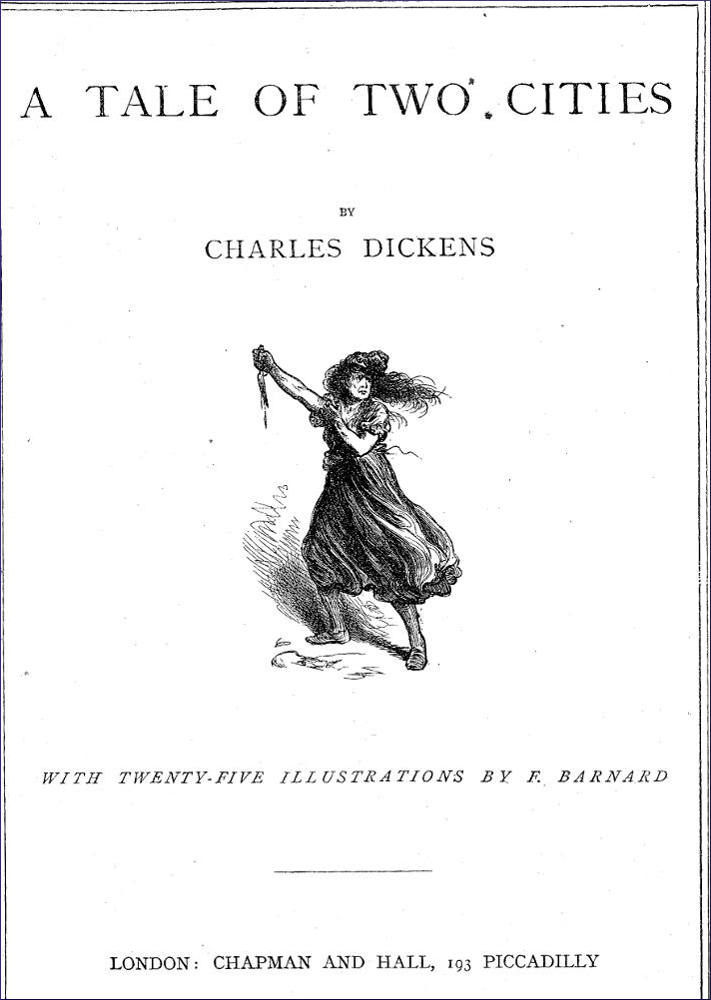The Title-Pages for Household Edition of Dickens' Works (Chapman & Hall, 1871-79)
Seven Title-pages for the Works of Dickens in the Household Edition (Harper & Bros.)
- The Old Curiosity Shop by Thomas Worth; (1872)
- Dombey and Son by W. L. Sheppard (1873);
- Pickwick Papers by Thomas Nast (1873);
- Nicholas Nickleby by C. S. Reinhart (1875);
- Christmas Stories by E. A. Abbey (1876);
- Hard Times by C. S. Reinhart (1876);
- Pictures from Italy and American Notes by Thomas Nast (1877)
- The Illustrators of the Household Edition.







Commentary: From the "Introductory Note" to "Scenes and Characters from Dickens" (1908)
Commissioned by Dickens's chief publishers, Chapman and Hall, to illustrate a wholly new, uniform edition of his works, Fred Barnard, Charles Green, Harry French, Gordon Thomson, A. B. Frost, James Mahoney, Edward Dalziel, and other "Illustrators of the Sixties" from 1871 through 1879 produced

a series of Dickens illustrations, now [i. e., in 1908] in some danger of being unduly neglected, in which the artists were wonderfully happy in preserving [ix/x] the original features of Phiz and Cruikshank's interpretations, while they toned down the more extravagant details and brought imagination into closer harmony with reality. These were the illustrations to the square-shaped "Household Edition," published in 1870 [i. e., 1871-79], just after the great novelist's death — and now reissued in the Dickens picture-book, in the hope that those who love the stories may like to possess in separate form what is, perhaps, the best pictorial accompaniment that the novels ever received. At the time of its first publication, the "Household Edition" enjoyed an enormous success. At the moment the name of Dickens was on every one's lips, and the fact that this splendidly illustrated reprint was issued in penny numbers and sixpenny parts placed it within reach of even the most humbly stocked purse. Its sale was stupendous, and the familiar green-covered pamphlets percolated through every town and village where the English tongue is spoken. The original copies may still be met with, under many a country timbered roof, carefully treasured as one of the most cherished household possessions.
Undoubtedly, a great part of the success [of the Household Edition] was due to the art of the illustrators. To begin with, there was an unusually liberal display of pictures — the edition, as a whole, containing close upon nine hundred. But more important than the number were the truth and sincerity of the interpretations — qualities which helped to give a new life to characters already secure of immortality.
Related Material: The American Edition Volumes by Harper & Bros. (1872-77)
Scanned images and text by Philip V. Allingham. [You may use this image without prior permission for any scholarly or educational purpose as long as you (1) credit the person who scanned the image and (2) link your document to this URL in a web document or cite the Victorian Web in a print one.]
Bibliography
Barnard, Fred. Scenes and Characters from the Works of Charles Dickens. London: Chapman and Hall, 1908.
Bentley, Nicolas, Michael Slater, and Nina Burgis. The Dickens Index. New York and Oxford: Oxford U. P., 1990.
Cook, James. Bibliography of the Writings of Dickens. London: Frank Kerslake, 1879. As given in Publishers’ Circular The English Catalogue of Books.
Davis, Paul. Charles Dickens A to Z: The Essential Reference to His Life and Work. New York: Facts On File, 1998.
Hammerton, J. A. The Dickens Picture-Book. The Charles Dickens Library Edition, Vol. XVII. London: Educational Book Co., 1910.
Kitton, Frederic G. Dickens and His Illustrators. 1899. Rpt. Honolulu: U. Press of the Pacific, 2004.
Scenes and characters from the works of Charles Dickens; being eight hundred and sixty-six drawings, by Fred Barnard, Hablot Knight Browne (Phiz); J. Mahoney; Charles Green; A. B. Frost; Gordon Thomson; J. McL. Ralston; H. French; E. G. Dalziel; F. A. Fraser, and Sir Luke Fildes; printed from the original woodblocks engraved for "The Household Edition." London: Chapman and Hall, 1908.
Created 5 December 2024























